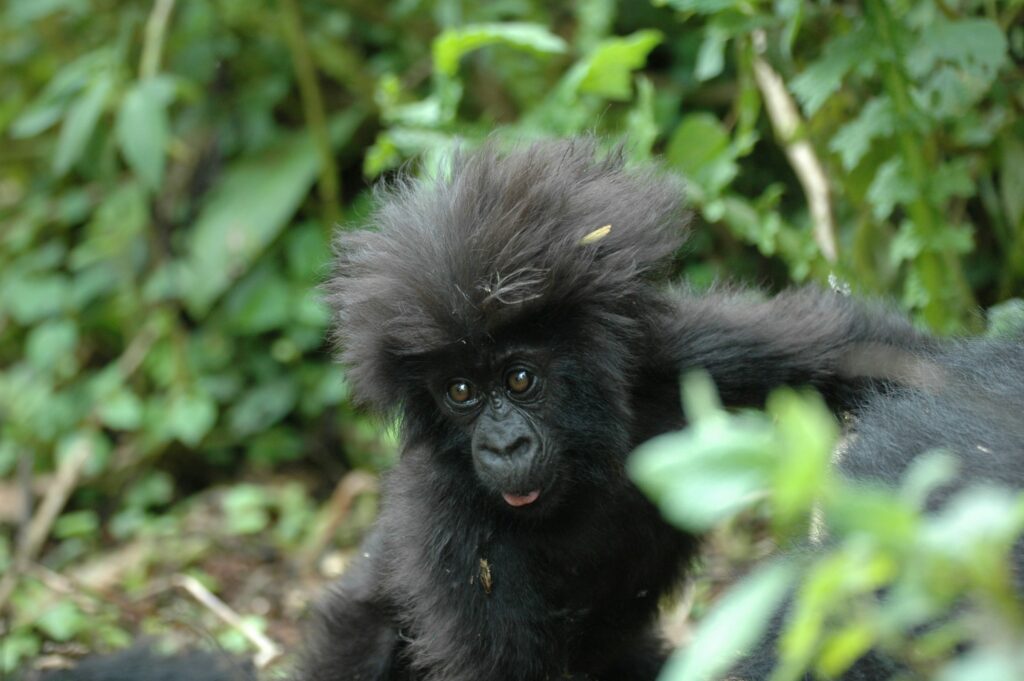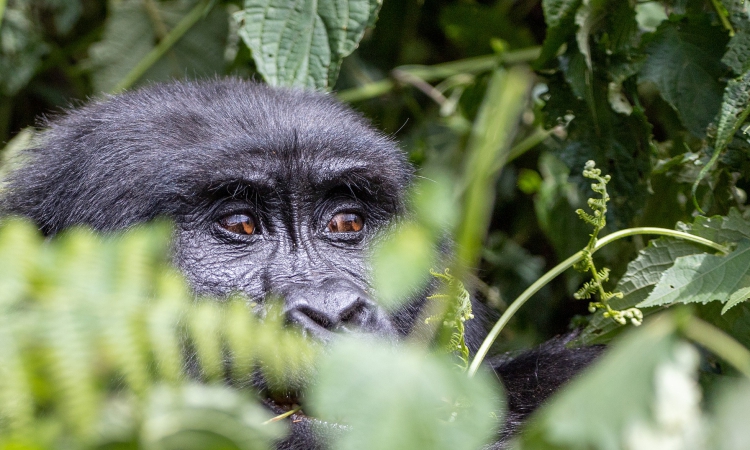Gorilla vocalizations – Gorilla vocalizations is a mode of communication among gorillas which go hand in hand with other communication modes such as facial expressions, and body postures to communicate dominance.
It is also a mode of showing Respect to a dominant individual as he/she approaches, Making an appeasement vocalization, which is often accompanied by a submissive posture such as crouching; and actions like throwing vegetation, chest beating, strut stances and even aggressive behaviors.

Different modes of vocalizations in gorillas
Gorillas have many different vocalizations to communicate different emotions within individuals or the entire group such as alarm, distress, aggression, contentment, and group coordination such as:
- Chest Beat: Chest beats among gorillas have number of meanings, the most common one being in times of aggression in males. This mode of vocalization is done by beating the chest with open palms, males have large air sacs located in their chests, which helps carry the sound over long distances. Chest beats are also common in younger gorillas, who do it while they are playing.
- Smiling and Yawning: Gorillas occasionally communicate in a couple of different ways by showing their teeth. One being “bared-teeth”, where the mouth is open and both rows of teeth as a sign of submission or appeasement. Gorillas, particularly males, may also reveal their teeth through yawns. Yawning signifies distress or anxiety among the males and as well serve as a warning sign and display of dominance.
- The Belch: This is a mode of vocalization which is used to convey a sense of contentment between individuals in the group
- Humming or singing: Gorillas also hum or sing as a way of finding a highly preferred food and usually involves several individuals or the whole group doing at the same time.
- Roars: These are loud, deep grunts exercised during long-distance communication, and precautions of potential threats.
- Grunts: These are low, guttural sounds for close-range communication, used for expressing contentment, curiosity, or mild alarm among individuals.
- Chirps: These are high-pitched sounds, often used by infants or juveniles, to show excitement, curiosity, or when playing
- Purrs: These are soft, rumbling sounds, closely related to those made by cats to show contentment or relaxation.
- Squeaks: These are high-pitched sounds, usually made by females or juveniles, indicating excitement, anxiety, or alarm which makes it almost similar to chirps
- Barks: These are loud, sharp sounds, used by adult males to make others aware of potential threats or to express excitement or alarm.
- Hoots: These are deep, nasal sounds, used by adult males to locate each other’s position or to signal the discovery of food within themselves.
- Pant-hoots: These are a combination of a pant and a hoot, used by adult males to show excitement, alarm, or the discovery of food.
Conclusively, gorilla vocalizations and physical displays play a crucial role in gorilla communication and social behavior, helping them maintain complex social relationships and navigate their environment.










